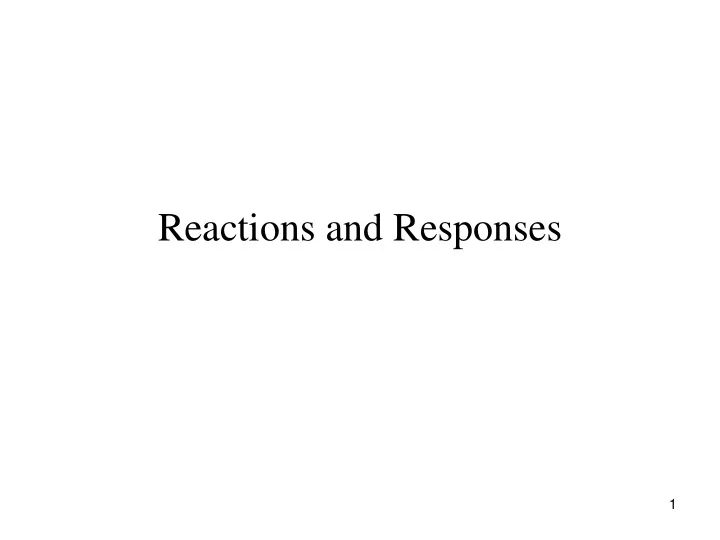

Reactions and Responses 1
IP Spoofing Stimuli • Why would an attacker spoof his source address? – Hide the attacker’s activity • nmap decoy option – Hide the attacker’s identity • To be able to view the responses, the attacker – Positioned between the location of this spoofed IP address and the targeted machine – Subvert one or more intermediate routers 2
IP Spoofing Stimuli - Spoofing ICMP/UDP Datagrams • ICMP and UDP and connectionless and stateless • It is often impossible to determine whether a received UDP or ICMP packet has been forged just by looking at the received packet in isolation 3
Spoofing TCP Connections • TCP – connection-oriented – Maintain state • How will the attacker respond to the SYN-ACK packet? – Switching to promiscuous mode – Predict the TCP sequence numbers used by the target machines – Subvert routers between the attacker’s host and the target host – The attacker might not intend to respond to the SYN-ACK packet • Half-open port scan • SYN flooding attack 4
IP Spoofing Responses – Spoofed ICMP Packets • Attacker sends an ICMP echo request – An ICMP echo reply to the spoofed IP address – An ICMP Destination Unreachable message to the spoofed address if inbound ICMP echo request packets are rejected • For the spoofed machine – Discard the received unwarranted ICMP echo reply 5
Spoofed UDP Packets 6
Response to TCP SYN Packets Should be “RST - ACK” 7
Example Traces • Port closed Spoofed IP address does not exist 8
Example Traces • Port open Spoofed IP address exists What intrusion activities can you derive from this trace? 9
Example Traces • A normal connection attempt to a closed port 10
Example Traces 1 • Port open Spoofed IP does not exist 2 11
Example Traces – Con’t 3 • Port open Spoofed IP does not exist 12
Example Traces – Con’t 4 Finally, the victim host sends a RST packet. 13
Spoofed TCP ACK Packets 14
Third-Party Effects • What if it is your IP address that the attacker chooses to spoof? 15
Third-Party ICMP Packets • If you receive ICMP echo reply packets, without sending ICMP echo requests, your IP address has probably been spoofed. • Smurf attack – You receive ICMP echo reply packets from many hosts at the same time – The attacker sends an ICMP echo request packet to the broadcast address of a suitably exposed network. The source address is spoofed to be yours 16
Third-Party TCP Packets • Unexpected inbound SYN-ACK packets followed by outbound RST packets – Probably, attacker sending a SYN packet using your address as the source address to an open port • Unexpected inbound RST-ACK packets – Probably, the spoofed packet is sent to a closed port 17
Recommend
More recommend